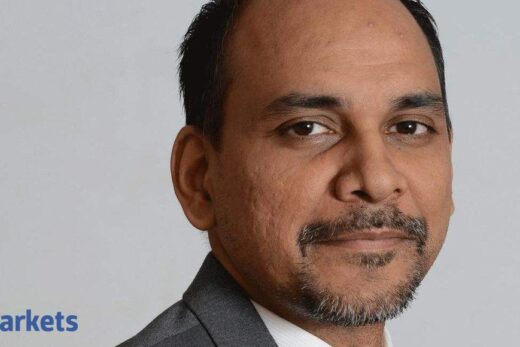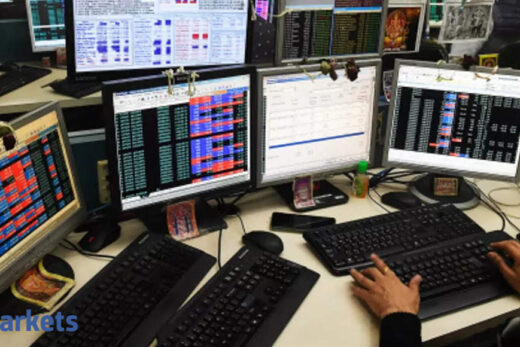Your market view of late is one of caution. When we are on the cusp of an economic recovery, why do you think that the best of the gains are behind us?
Since the end of March 2020, I had a clear view of how markets were misreading macro. Macros were extremely supportive of risk assets, more specifically equities, and was leading the markets higher. We have made a lot of returns since then and most portfolios are up by 100-200%. So what now? I think the environment is somewhat muddied now and valuations are a tad expensive. One can see pockets of bubbliness in small caps at least.
The supply of equity is huge, not just in India but across the world. In India’s case, there will be $35-$40 of unprecedented supply and the flows are not too much to absorb this sort of supply. Between mutual funds and FIIs together, I do not expect more than $20 billion worth of inflows. Also the macro is somewhat muddied. The rupee bottomed out about two months ago and it is back up. The fact that the dollar is appreciating is a risk off indicator. Central bankers are pulling back. Emerging market countries like Mexico, Russia and Brazil are actually hiking rates. Even the Fed is beginning to sound cautious.
The maximum growth momentum is behind us. I understand and appreciate that this growth is going to be super strong over the next one-one and a half year but the market notices the delta and that delta is not going to be positive at margins. The derivative of growth is going to slow down. Most hard data is surprising on the lower side and in this backdrop, India has not managed the crisis as well. The fiscal response has been weak. Covid devastation has been substantial for both household finances and healthcare.
When I look at the backdrop of what stocks have already done, it makes sense to pull out and review things and come back. In the long run, stocks always do much better than everything else including cash, gold and bonds. It makes sense to be somewhat cautious.
If liquidity is abundant, even if markets are expensive and macros are bad, the compulsive nature may keep the market afloat?
That is true. A few days back, when I wrote a small memo why I am turning cautious, one of our buy side guys told me that only God can predict the top of the market. I am aware that this frenzy can go on. We have seen this happening in the past and it can go on for longer but I am a macro guy and I advise people to invest only when both valuations and macros are supportive. Every time people talk about valuations being expensive.
I have made this argument that macro is far too supportive and let us be somewhat dismissive of valuation at the moment. But when the winds are changing and the macro is taking a bit of a turn, it makes sense to be cautious. It is true that the liquidity is huge. The run rate of liquidity or the second derivative of liquidity is actually plunging. Credit impulse in China has been plunging for the last five-six months and you can see what has happened to commodities because of that. Pretty much all industrial commodities are down.
In Europe and the US also, the credit impulse at margin is beginning to go down. Its impact would be seen two-three months out and it would be seen in stocks as well. It is not a coincidence. The dollar is appreciating and in this case, again US treasuries have come off but they are hinting at something which perhaps every market would not like. They are hinting that perhaps we are not going to get great growth in the long term. The real rates in US have plunged which essentially hints at the fact that perhaps for very long, we would not get this rock solid growth. One could argue that there is lots of liquidity and frenzy buying for a lot of these stocks, but at the margin, my job is to predict what lies a month or two month out and that is not looking good to me right now.
One basic argument is that commodity prices are down and the dollar is strengthening and that is bad news for India because we are a dollar and a crude economy. But if one looks at the balance sheet of the US Fed, we know that there is a hole which means eventually dollar is headed lower. If dollar is headed lower, commodity prices should go higher. Is it a valid argument that if commodity comes back, a lot of pain points will be taken care of?
Commodities are pivoted to China. In a sense, most stocks are pivoted to Fed balance sheet or let us say G3-G4 balance sheets. Commodities are pivoted to China reflation and one cannot disassociate commodity price direction to how the Chinese economy is moving. We know it has slowed down quite substantially over the last six-eight months. Also remember that China is ahead of the global macro cycle by six to eight months because they tamed Covid much ahead of everyone else. So, to that extent, China is giving a glimpse of how the rest of the world would look like in four to five months’ time.
Now as far as the dollar is concerned, the Fed has a bloated balance sheet and at margin they would continue to supply a lot of dollars but the overall momentum would reduce. The Fed would at some point in time, given the inflation backdrop, start taper. The US economy is doing bombastically well. It is fair to assume that for many central bankers, more specifically the US, which has done so wonderfully well in terms of reviving its economy, it makes sense for them to take a pause and that is why taper is around the corner.
My bet is that in early 2022 or the end of 2021, we will begin to see taper. There is absolutely no case for a case like 2013 and emerging market countries and currencies and stocks are not going to blow up. This is because our balance sheets are much stronger. India has forex reserves in excess of $700 billion. So our currency is not going to blow up. It is just that if the delta of liquidity on the dollar side turns weak, the dollar would began to strengthen and which is what we are seeing now.
We know as a matter of fact that the dollar is not able to breakdown below a certain point and it is finding a lot of support at 88, 89, 90 and its coming back up again and again suggests that markets are looking at something new and something more and we have to take care of that.
Assess the liquidity situation for us because the buoyancy of liquidity will definitely get the Indian markets going, but if there were to be a U-turn in the foreign fund flows,would domestic institutional flows be strong enough to support the market?
As far as foreign funds are concerned, there is a bit of a rerun of happenings in 2011. At that time, high inflation and higher rates in India with lower growth prospects led to a situation where overall fund flows began to decline and they never recovered since then. Only briefly once or twice, we had big flows. Last year, we had very strong flows. Some of it was because of the Covid unwinding. Foreigners sold large amounts of stocks. But then, over the last five-six months, the flows are reducing. It is not just in India. Flows are drying up because the foreign flows are looking at a variety of things, but most importantly, the currency. They are not looking at the country’s macro as strong again from a relative standpoint.
The US is going past the pre-Covid run rate of output whereas for India, it is quite a struggle right now. It will take years and years for us to go back to the pre-Covid output level. Foreigners are margin cautious and therefore we may not see big money coming in. In the wake of Modi’s victory, large amounts of money started to flow into mutual funds. It got accelerated after demonetisation because people had a lot more cash and because of low inflation, property markets were not doing well. There was a lot of push into the financial savings but that began to slow down about a year ago and it has not recovered fully.
So to argue that domestic investors would be able to plug in to absorb the sort of supply that we are seeing is misplaced. After a long time, supply-demand is matching on the equity side. Supply has always been higher in Indian government bonds over the last 10-12 years versus demand. There is $30-40-45 billion worth of supply of equities whereas the domestic investors would not get more than about $8-10 billion and foreigners would go back to the run rate that we have seen over the last 10 years which is more like $10 billion.
Last year, the $30 billion of foreigners’ money which flowed in the country was something of an anomaly, but it is drying up now. So, let us not get excited about flows too much. In a sense, flows are relatively smaller today than we have seen in the past.
Do you believe that as we see gradual normalisation of the economy that can lead to a taper and the overall bond buying programme which coupled with perhaps a strong job market could lead to a tightening of bond yields?
Yes absolutely. I would be surprised if treasury yields both in India and US are not substantially higher from where they are today. But let us take a small step back. Everyone was convinced that US Treasury yields will go higher but they wound back because the market thinks that inflation is transitory. But I think the main reason why UST backed off was because technical factors like US treasury unwinding led to low supply of paper in the past couple of months along with the skewed positioning of investors in favour of short US treasury. That is why we had unwinding of US treasury yields.
But given the growth inflation set up, the US rates are certainly going to head higher. In the last five years, on an average, US treasuries have traded at 2%. I would not be surprised if in about a year, year-and-a-half time, we get to at least 2% if not higher. As far as India is concerned, India has a clearer case of higher bond yield. Indian markets are overwhelmed with supply. The total supply of bonds is actually twice over the last two years. There is almost Rs 18 odd lakh crore of run rate of supply of government bonds between state governments and central government. There is absolutely no visibility of even half of the bond being demanded by the market.
Though it is not said very clearly, India is a clear case of yield caps right now and it is a dangerous experiment being run by the RBI. They are not letting the 10-year bond move up substantially. If you allow market forces to work on 10-year bonds, 10-year bonds would go up right away. To that extent, the case for Indian government bonds to head higher is far easier because the case of India’s inflation sustaining higher and India’s total bond supply overwhelming markets is much higher and points to higher yields throughout next one, one-and-a-half year.
The case for US T-bonds (USTs) is a bit nuanced. I have a strong view that USTs will head higher but one could argue on both sides. In India’s bond case, it is almost given that bonds will head higher once the so-called soft yield cap goes away.
That means for the next couple of quarters, two, three quarters rate sensitives will underperform and dollar sensitives will outperform?
Yes and no. Indian rates are pregnant with a sort of up move because it would have already happened had RBI not been there. So to that extent, all of us are well aware of it and which is why we are seeing that outside of 10-year bond, rates have already moved up. This upward movement in interest rates in India is happening in a relatively weakish macro like in 2011 again. India’s recovery is not complete; our output gap is still substantial but because of high food prices, high crude prices and shortages across the economy, our inflation has been relatively higher for the last one to two years, almost 5.5% inflation.
It is a nuanced argument that rates are heading higher because India is experiencing elevated inflation because of supply side issues. That is not a very good sign for everything — rate sensitive or otherwise. Even then, if you were to think that the dollar is going to appreciate at the margin and the rupee will weaken, what you are seeing is that markets are sensing and smelling it again.
Anything which is dollar sensitive or which is priced in the dollar like commodities will be impacted. Everything that JSW and JSPL sell in India, is basically a dollarized balance sheet. It is the same thing for IT and to a very large extent, pharma. Just on this vector, there would be some tailwind for these dollarized balance sheets versus many local balance sheets which are going to struggle because of the stagflation scenario that India is witnessing.
By and large, your advice is keep cash handy because bonds will rally and if bonds or yields go higher, equities will come down. So, one is better off sitting on cash or putting money in a fixed deposit.
It is like this. By the way, stocks historically have always outrun cash and bonds substantially. So if you are a very long investor, if you do not care and prefer to put your money in Nifty index and forget about it and if you are a macro guy like me who would like to extract excess equity risk premia sometimes by being overweight and sometimes by being excessively underweight — there is an opportunity for you to pull out of the market after having made 100-200% returns over the last 15-16 months.
There is a lot of bubbliness in the market right now. The Twitter heroes are actually recommending stuff and realising them instantaneously and a lot of people are getting trapped. My advice to an average investor is that: relax right now, you are not going to miss big time anything by staying out of markets for a couple of months. Even if you are a compulsive investor, just put money in the Nifty and forget about it, do not take an active call right now.
Take your time out, think about markets, themes, stocks because everything has run up like crazy over the last 15-16 months. Markets are going to be much more nuanced now so it is time to take time off and rethink.
In the last seven, eight days, I have withdrawn from pretty much all my friends who manage my money in small cap funds. The next bias would be that my sense is that small caps and midcaps would underperform mega caps and as such over six, eight months I think markets would struggle. So I am going to take some time out, rethink and then redeploy. But yes for a broad big picture run, the glorious decade for India is still my thesis. It is just that we are hitting the intermittent soft patch right now and it is the time to rethink and then redeploy money.



